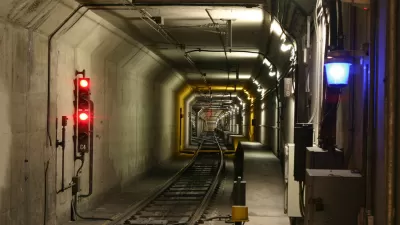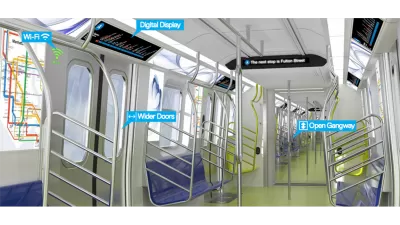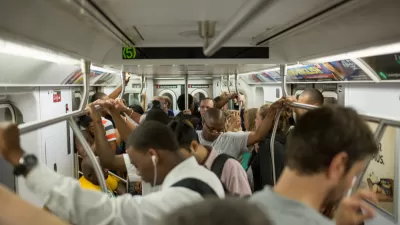New York City is lagging behind cities like London, Paris, and Tokyo in implementing Communications-Based Train Control (CBTC). A recent report provides recommendations on how to speed up the process.
Stephen J. Smith provides analysis of a recent report by the Regional Planning Association (RPA) about the implementation of Communications-Based Train Control (CBTC) on the New York City subway system.
As explained by Smith, CBTC is the remaining option for improving train service on urban transit systems like New York's—organizational fixes are maxed out, and construction is prohibitively expensive. But "London, Paris, Madrid and other cities in Western Europe are making great strides in equipping their generations-old lines with CBTC, while Japan has systems that achieve similar results." However, "New York City, as always, is the laggard."
The MTA, however, is targeting CBTC upgrades of 16 track-miles per year. "Up until now, the MTA has averaged only four track-miles of CBTC upgrades per year," reports Smith. The RPA report recommends 21 track-miles a year.
Smith's analysis provides additional insight into the complexities of upgrading the MTA system as well as more of the benefits of the switch, beyond increased speed and capacity in the system: "CBTC systems are also more resilient than complex traditional signaling systems. The L train’s transponders survived five days under the salt water that Sandy washed in, while the old 'fixed block' systems required much more work to get back in working order."
FULL STORY: Advanced Signaling Makes the Most Out of Old Subways, But Can New York Handle It?

Alabama: Trump Terminates Settlements for Black Communities Harmed By Raw Sewage
Trump deemed the landmark civil rights agreement “illegal DEI and environmental justice policy.”

Planetizen Federal Action Tracker
A weekly monitor of how Trump’s orders and actions are impacting planners and planning in America.

The 120 Year Old Tiny Home Villages That Sheltered San Francisco’s Earthquake Refugees
More than a century ago, San Francisco mobilized to house thousands of residents displaced by the 1906 earthquake. Could their strategy offer a model for the present?

In Both Crashes and Crime, Public Transportation is Far Safer than Driving
Contrary to popular assumptions, public transportation has far lower crash and crime rates than automobile travel. For safer communities, improve and encourage transit travel.

Report: Zoning Reforms Should Complement Nashville’s Ambitious Transit Plan
Without reform, restrictive zoning codes will limit the impact of the city’s planned transit expansion and could exclude some of the residents who depend on transit the most.

Judge Orders Release of Frozen IRA, IIJA Funding
The decision is a victory for environmental groups who charged that freezing funds for critical infrastructure and disaster response programs caused “real and irreparable harm” to communities.
Urban Design for Planners 1: Software Tools
This six-course series explores essential urban design concepts using open source software and equips planners with the tools they need to participate fully in the urban design process.
Planning for Universal Design
Learn the tools for implementing Universal Design in planning regulations.
Clanton & Associates, Inc.
Jessamine County Fiscal Court
Institute for Housing and Urban Development Studies (IHS)
City of Grandview
Harvard GSD Executive Education
Toledo-Lucas County Plan Commissions
Salt Lake City
NYU Wagner Graduate School of Public Service





























